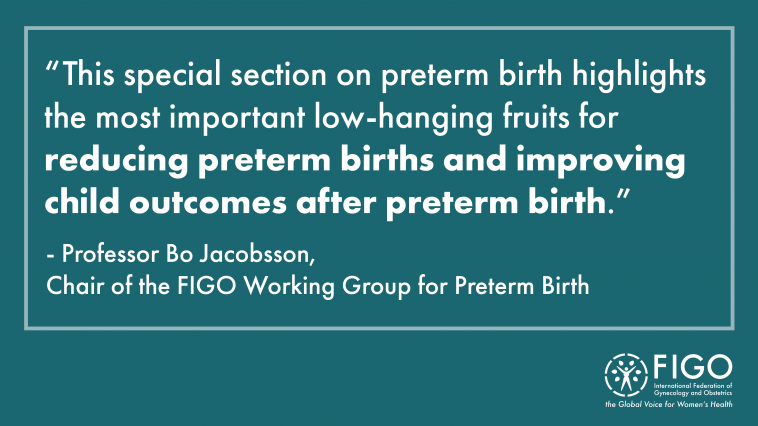Managing preterm birth: IJGO launches a special section with good practice recommendations
The FIGO Working Group for Preterm Birth published a special section in the October 2021 issue of the International Journal of Gynecology & Obstetrics. The special section contains nine FIGO good practice recommendations for the effective management and monitoring of preterm birth.

Good practice recommendations to manage preterm birth
Each of the nine papers in the special section provides a recommendation based on a variety of sources, which include guidelines from the World Health Organization, governmental health care agencies, professional societies and global collaborative networks, as well as data from randomised clinical trials in peer-reviewed journals with high impact factors and robust analysis.
The Working Group produced nine FIGO good practice recommendations that were stratified into three categories. The first set of good practice recommendations acknowledged the need for accurate, accessible and timely population-based registries. Sustained access to quantitative preventive strategies will enable countries to fulfil global Sustainable Development Goals for women, children and adolescents’ health.
The second group of papers deals with the therapeutic extension of gestational length to decrease rates of preterm birth. The three methods explored in this group of papers were progestogens, cervical cerclage and pessary.
The final group of papers evaluate obstetrical management methods when preterm delivery is imminent. The Working Group explored the efficacy of prenatal corticosteroids and their relevant dosage recommendations. The value of magnesium sulphate for foetal neuroprotection against cerebral palsy was also considered. Lastly, the group assessed the effect of delayed cord clamping on neonatal hematologic indices and hospital mortality.
Preterm birth is the one of the leading causes of under-five mortality. It is even more common than malaria, pneumonia and diarrhea, which are all well-known killers of children.
This special section on preterm birth highlights the most important low-hanging fruits for reducing preterm births and improving child outcomes after preterm birth.
– Professor Bo Jacobsson, Chair of FIGO Working Group for Preterm Birth
Read the Preterm Birth Special Section
Recommendations from the Working Group for Preterm Birth
- Preterm deliveries have started to increase around the world. Although obvious, the group highly recommends that babies should not be delivered preterm without a strict and accepted indication.
- Investments in digital registries should be strengthened, enabling integration with reproductive, maternal, newborn, and child health services adhering to targeted WHO recommendations.
- In cases when assisted reproductive technology (ART) is used, single embryo transfer (SET) is now recommended instead of multiple embryo transfer.
- The Working Group does not recommend progestogens for asymptomatic women with no prior history of preterm birth and no short cervical length, either in singleton or in multiple pregnancies.
- Current evidence on cord clamping delay supports not clamping the cord before 30 seconds for preterm births. Future trials could compare different lengths of delay. Until then, a period of 30 seconds to 3 minutes seems justified for term-born babies.
- Prenatal corticosteroids should be reserved for women with an imminent preterm birth delivery based on the woman's symptoms or an accurate predictive test.
Read the Preterm Birth Special Section